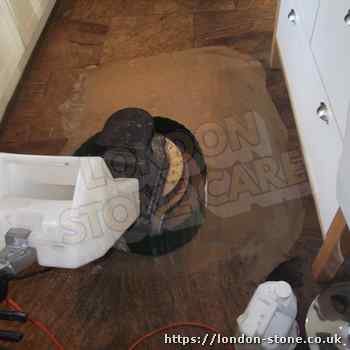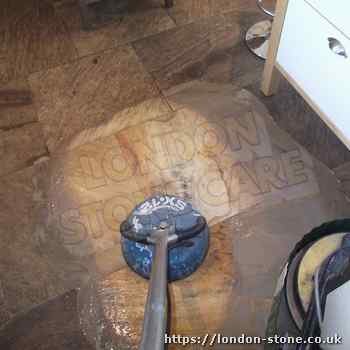
Sandstone Cleaning London
Introducing The Best Quality Sandstone Cleaning London.
- Your local Sandstone cleaning experts.
- Experts with a large knowledge of the restoration of Sandstone , established well over two decades.
- Drop us a line for your no-cost Sandstone cleaning quotation.
Cleaning Sandstone

Our Sandstone cleaning solutions deal with a number of Sandstone floor types, including common local sandstone like York stone and natural flagstone.
Our specialists put on a powerful Sandstone tile cleaner on the tiles. And then our specialists leave the cleaning solution for around twenty minutes to break down the greasy plugs. Our specialists use an industrial scrubbing machine to scrub the cleaning solution deep to the floor.
Take off the slurry using clean water rinsing. Our specialists repeat the scrubbing until the floor looks clean. 1 or 2 scrub and rinse steps is generally sufficient for honed Sandstone tiles.. Additional scrubbing and rinsing passes may well be needed for tumbled Sandstone. Machine scrubbing might not clean out all the dirt.
Pressure Rinsing Sandstone

The remaining step with cleaning Sandstone tiles, is called hot rinsing.
Heated water is sprayed onto the stone at high-pressure, bringing out ingrained dirt.
It really is astonishing how much more soil this rinsing process removes.
Sandstone Restoration
Once the floor is clean, it may need further restoration.
Repairing The Grout on a Sandstone Floor
Acid grout cleaning chemicals can damage grout, to make it very porous so it absorbs unsightly stains. Grouting more than deep set grout can really help address this issue.
Diamond burrs could be used to remove old grout before putting in new grout.
Regrouting and the removal of old grout is pricey work.
Damaged, cracks and chiped floor tiles can be replaced or repaired. The Sandstone floor is then left to dry before applying a sandstone sealer.
Sandstone Sealing
The sort of sealer to put on is dependent on the type of a sub-floor.
Sealing When A Floor Has No Damp-proof Membrane.
In old homes and cottages, the Sandstone can be put on sub-floors lacking a damp proof membrane lfilm. In the United Kingdom there are many old homes that have stone floors. Any sealer will require to have to enable the movement of moisture through the Sandstone. types of floors require a penetrating impregnating sealer. Generally, three or more layers will be needed. Sorry to say, many installers use only one layer, which in turn produces problems at a later time.
Sealing Sandstone Set On A Floor With A Damp-proof Course
Impregnating sealers will preserve the original appearance.
Surface sealers are also available for Sandstone.
Surface sealers provide a protecting film on the surface of the floor.
Surface sealers give more protection against acid etching.
Surface sealers bring extra protection to the Sandstone and the grout.
Since the sealer stays on the surface of the Sandstone, we advise putting on one or two of coats of impregnating sealer beforehand.
If the surface sealer wears, the impregnating sealer still supplies protection until the Sandstone is re-sealed.
Surface sealers typically keep going for 2 to four years.
We advocate checking wear areas every few months for wear.
If a location is showing wear, deep clean the region to have rid of soil.
A number of coats of sealer should restore the finish.
If you are doing this, your sealer can work for much longer.